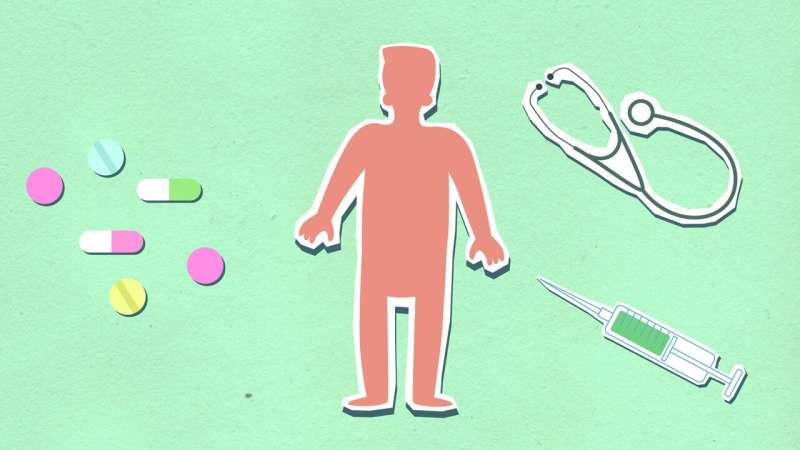This article has been reviewed according to Science X's editorial process and policies. Editors have highlighted the following attributes while ensuring the content's credibility:
fact-checked
peer-reviewed publication
trusted source
proofread
Oral delivery a possibility for silica-based nanocarriers for therapeutics

Take a pill, or get a shot? Given the choice, most people would likely go for the former.
Ultrasmall fluorescent core-shell hybrid silica nanoparticles—known as Cornell Prime Dots, or C'Dots—are among the nanocarriers for therapeutics that were thought to be viable only by injection, but new Cornell research has shown the potential for their oral administration.
"Because the particles are so small, we always thought it might be possible that they could be taken up in the gastrointestinal tract," said Ulrich Wiesner, the Spencer T. Olin Professor in the Department of Materials Science and Engineering, at Cornell Engineering, whose lab developed C'Dots nearly two decades ago.
"Patients would likely prefer to take pills orally rather than having to go to the hospital to get an injection," Wiesner said. "Most of the current cancer therapies are administered by injections. So the motivation was clearly there."
Wiesner is senior author of "Overcoming Barriers Associated with Oral Delivery of Differently Sized Fluorescent Core-Shell Silica Nanoparticles," which was published Nov. 23 in Advanced Materials.
Co-lead authors are Jacob A. Erstling, Ph.D. '22, and Thomas C. Gardinier, Ph.D. '19, both of whom worked in the Wiesner group and now at Elucida Oncology, Inc., a New Jersey-based biotechnology company co-founded by Wiesner, as well as Nirmalya Bag, a former postdoc in the Department of Chemistry and Chemical Biology in the College of Arts and Sciences and now on the faculty at IIT Kharagpur in India.
In addition to the potential for oral administration of C'Dots for cancer and other therapies, the research has also spurred new interest in ultrasmall silica itself as a health benefit. Silica is the most abundant oxide in the crust of the planet, and is found in green beans, bananas and leafy greens, among other "healthy" foods.
"Ultrasmall silica may actually be a natural material that via intestinal uptake has been circulating in animals over millions of years in evolution," Wiesner said, "and therefore may provide benefits to the body in the same way as small amounts of iron, copper, calcium, magnesium and other minerals are known to be important for our well-being."
C'Dots' potential in therapeutic medicine has led to several major discoveries, including their ability—without a cytotoxic drug payload—to induce a cell death program in nutrient-deprived cancer cells known as ferroptosis. The latest C'Dot breakthrough came earlier this year, when combining antibody fragments and a drug with the dots permanently eradicated gastric cancer in treated mice.
Oral administration of C'Dots has been a challenge due to several major barriers: intestinal mucus; intestinal epithelium; and stomach acid. The mucus protects the body from disease by slowing the diffusion of foreign objects toward the intestinal epithelium—including nanoparticles. The epithelial lining, primarily comprised of enterocytes that form tight junctions, is a major obstacle not letting larger objects through.
Wiesner's group performed numerous tests on plain (no drugs attached) nanoparticles of varying sizes, from 5 to 50 nanometers in diameter, and found particles below 20 nanometers (including C'Dots) displayed high enough permeability through the mucosal layer and the epithelium for oral delivery.
The group then performed oral delivery experiments in a small number of mice, and found uptake in the bloodstream and successful renal clearance without a protein corona typically observed for other drug carriers. Wiesner stressed that evidence of uptake via oral delivery in animals is no guarantee of similar results in humans, but "the fact that we see in animals that the particles are being taken up in the bloodstream is significant in and of itself."
The group also developed a polymer-coated pill, which would protect drug-equipped C'Dots from degradation in the acid of the stomach.
C'Dots' ability to induce ferroptosis got Wiesner thinking about possible health benefits of silica, which is found in many healthy foods. Wiesner consulted with Saurabh Mehta, the Janet and Gordon Lankton Professor in the Division of Nutritional Sciences, in the College of Human Ecology.
"We asked him, 'What do you know about anti-tumoral effects in an environment where nutrition is rich in biogenic silica products?'" Wiesner said. "And he said, 'We don't know; nobody ever asked that question.'"
Mehta said silica's effects on the immune system and gut microbiota need further study.
"Silica is ubiquitous in our food system, with its use in different stages of food production, processing and packaging including as a food additive," said Mehta, a co-author. "It's generally considered to be safe; some studies also show that they may have biological activity and health benefits, which need to be further studied."
More information: Jacob A. Erstling et al, Overcoming Barriers Associated with Oral Delivery of Differently Sized Fluorescent Core‐Shell Silica Nanoparticles, Advanced Materials (2023). DOI: 10.1002/adma.202305937
Journal information: Advanced Materials
Provided by Cornell University




















